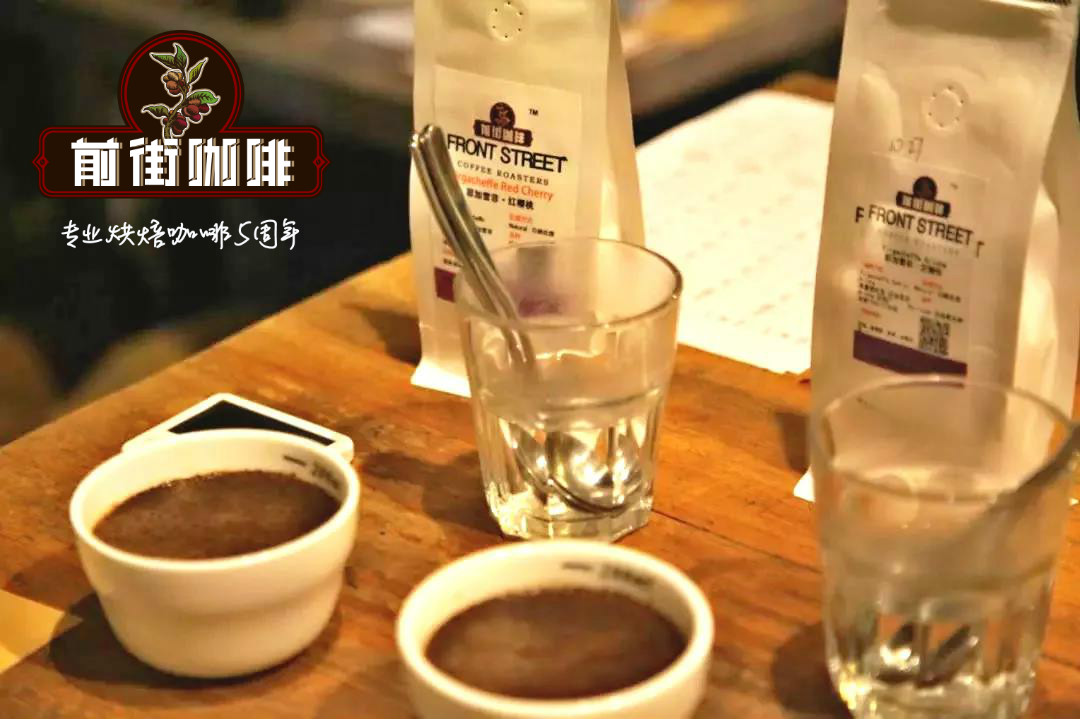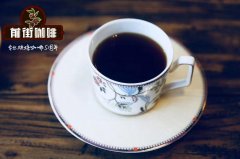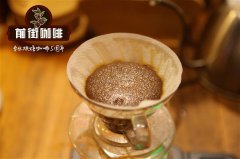Flavor characteristics of Yellow Bourbon varieties of Coffee beans in Queen Manor of Brazil taste description of coffee bean baking parameters

Professional coffee knowledge exchange more coffee bean information please follow the coffee workshop (Wechat official account cafe_style)
Queen's Manor of Brazil
[country] Brazil: s ã o Paulo Sao Paulo state near S ã o Sebasti ã o da Grama
[manor name] Queen's Manor (Fazenda Rainha)
[owner] Regina Helena Mello de Carvalho Dias belongs to the Carvalho Dias family
Huang bourbon, Yellow Bourbon
[treatment] hand extraction, followed by half-sun treatment
[Origin] Queen's Manor of Brazil (Morgiana) producing area.
Yellow bourbon
[altitude] 1400-1950m
[treatment method] solarization
[flavor] the sweet, clean beans and the use of half-sun will brighten her acidity but match the sweetness, and some of them even have tropical fruit aromas.
[introduction to the Manor]:
This coffee comes from FazendaRainha (Queen's Manor), which covers an area of 280mu and is located in Vale da Grama, an ancient volcanic valley in Brazil.
In 2011, the manor won the championship in the COE competition in Brazil. Fazenda Rainha is owned by the prestigious and respectable coffee family Carvalho Dias family. Since the first Brazilian COE Competition in 1999, Carvalho Dias's four major estates have won awards every year, winning more than 12 times in the past seven years, and even arranged for the champion, 9th, 11th and so on in 2004, many large and small estates in Brazil.
After years of hoping to be shortlisted and difficult to win, the family's manor has taken away many awards in successive years. Even the Queen Manor Fazenda Rainfa bought by Osher enjoys a brilliant record: 2000 runner-up, 2001 second runner-up, 2005 29th place, and so far, Queen's Manor has won three awards.
The Carvalho Dias family is also a founding member of the Brazilian Fine Coffee Association. The insistence on the quality of Brazilian coffee and the maintenance of the environment are obvious to all. In the family farm, the use of natural waterfalls to develop pollution-free hydropower, self-sufficient electricity demand (another award-winning member of the family is named Falls Manor after this waterfall) Construction of churches, classrooms, nurseries, medical stations, maintenance of primitive forests of native animals and plants, and continuous afforestation. In the case of the Queen's Manor, the environmental protection is quite thorough. Because of the high terrain and non-plain terrain, it is impossible to use machines to harvest, and the fruits can be harvested completely by hand. And plant low-yield and high-quality bourbon species, as the essence of high-quality Brazilian coffee on behalf of the manor!
The peeling and Meat handling system of Queen's Manor (Coffee processing system):
The ripe cherry fruit is picked on the cloth bag by hand to avoid touching the ground. The coffee fruit harvested on the same day must be sent to the treatment plant to which the manor belongs for half-sun treatment (Pulped Natural). The coffee fruit is picked by hand and surrounded by cloth. This is to avoid the earthy taste and any improper fermentation flavor. When the harvested coffee fruit arrives at the processing site, wash the coffee fruit immediately: wash the coffee fruit clean. The unqualified or dried fruits (b ó ia beans) were screened out according to the size partition of the bean body, and the qualified beans were screened, and the peeling action continued (using the pulper machine).
There are 200 mu of Huangbo coffee trees planted in the manor, and the undulating mountains make it impossible for large-scale mechanical harvesting, so all the coffee here needs to be harvested by hand.
The manor uses sun / half-sun treatment, semi-washing through drying racks and baking machines, and mechanical screening is supplemented by manual screening. a lot of work requires farm employees to live on the farm all year round. All employees and their families can enjoy housing, health care and education benefits here.
The estate is a member of a local Grama Valley medium-sized farm organization that mainly exports boutique coffee from bourbon varieties. The organization's office is located in nearby Pocos de Caldas, and they also have a national cup testing laboratory with a large warehouse. The group also works with local universities and other institutions to conduct research, including Lavras University, where the famous Dr. FlavioBorem is from its agricultural research center.
Award record of Queen's Manor:
13th in 2014 COE Cup of Excellence
No. 02 COE Cup of Excellence in 2013
No. 08 COE Cup of Excellence in 2012
2011 COE Excellence Cup Champion
No. 20 in 2010 COE Cup of Excellence
No. 06 COE Cup of Excellence in 2009
No. 14 in 2008 COE Cup of Excellence
[related little knowledge]:
The Cup of Excellence (COE) extraordinary Cup project and trademarks are currently owned and managed by the Alliance for Coffee Excellence American boutique Coffee Alliance (ACE, a non-profit organization). Every year, ACE and the extraordinary Cup Project (Cup Test Competition) hold national cooperation to complete the cup screening and online auction of high-quality coffee, and to suggest and promote anything related to the improvement of coffee quality, in order to select a model of high-quality coffee in the host country and exchange experience for the industry to learn.
This bean is 100% yellow bourbon, and its provenance can be traced back to Reunion Island, Madagascar, where bourbon originated. French explorers brought coffee here for the first time in the 18th century, so this breed is also called French missionary. In the 20th century, it was brought to the African continent and then introduced to Brazil, and its derived varieties are now all over Africa and America. The fruit of the bourbon species grown in Brazil is yellow because of its recessive genes.
Raw bean analysis
The bean is treated with the Cerezadescascado method invented in Brazil, a natural treatment similar to honey treatment that makes the coffee taste more round, somewhere between washing and full-sun treatment. During the treatment, a small amount of water is used to remove the pulp and peel, and then the coffee is dried directly on the drying rack, which is constantly turned over to ensure that all the coffee is exposed to the sun. after several days of drying, mechanical drying is carried out to achieve the appropriate water content.
The properties of the treated coffee beans are relatively stable, can be preserved for a long time, the water content is low, and the coffee bean particles are relatively large. 98% of the beans can reach more than 16 mesh, and half of them can reach 18 mesh.
The Brazilian coffee grading system, which scores the proportion, size, flavor and taste of defects, is its own independent grading system, which is more complex than that from other countries. For example, the "Brasil Santos NY2 SC17/18 SS FC" NY2 classifies the proportion of defects: the higher the number, the greater the proportion of defects. The order is 2, 2, 3, 3, 3, 4... NY says it is based on the New York rating standard.
↑ raw bean has a very strong aroma of fermented berries.
[baking analysis]
The raw bean is solid in quality and has a good flavor, with a hint of orange peel and spice.
Moisture content of raw beans is 9.9%.
The water content of the beans is relatively low, which makes the beans have a strong ability to absorb heat, so the baking plan is to put the beans into the beans at 200 degrees, then the fire and small throttle to speed up dehydration, and when the dehydration stage is over, open the stroke door and medium heat to let Maillard react. Don't be in such a hurry, close to an exploding tail.
After baking for 4 times, it is better to choose between 1: 45-2 after the end of the first explosion. Taste with obvious sweetness, but not so boring sweet, the background with a hint of lemon aroma, this aroma is more prominent in the wet fragrance stage, the latter part of the performance has an obvious taste of dark chocolate, the overall feeling is more round, while reflecting the overall characteristics of Brazil, without losing liveliness.
550g of beans
[cup test]
Dry aroma: roasted hazelnut, cinnamon
Wet aroma: slightly tropical fruit aroma, cream, sucrose
Delicate nutty, fruity, creamy peanuts on the palate
[hand flushing record]:
[reference]
Queen's Manor of Brazil. 15g powder, medium grinding (small Fuji ghost tooth cutter 4 grinding)
V60 filter cup, 88-89 degrees water temperature, 30g water injection for the first time, steaming for 27 seconds
Cut off the water when injected to 105g, wait for the water in the powder bed to drop to half, then inject water slowly until 225g, not at the end, the ratio of water to powder is 1:15, and the extraction time is 2:00.
[flavor] Sweet, clean and half-sunny beans will brighten her acidity but match the sweetness, and some of them even have tropical fruit aromas, especially the overflowing aroma of cooking. Sugar cane juice's sweet, black tea, beautiful and smooth fruit sweetness, obvious nutty flavor, balanced and supple acidity, weak and clean bitterness, rich chocolate aroma and nutty flavor, bright and refreshing taste, smooth and delicate taste.
Use this coffee from FazendaRainha [Queen's Manor] in Brazil to make a cup of iced coffee, which is called 15g powder, small Fuji grind 3, brew it with 88 degrees hot water, put 100g ice in the sharing pot, steam 30 grams of water for 30 seconds, stir slightly during steaming, pour water to 150 after steaming, taste smooth, chocolate nut flavor is outstanding, sweet, very suitable for a cup in this weather.
Related recommendation: introduction of the difference between Brazilian yellow bourbon coffee beans by hand and red bourbon
Important Notice :
前街咖啡 FrontStreet Coffee has moved to new addredd:
FrontStreet Coffee Address: 315,Donghua East Road,GuangZhou
Tel:020 38364473
- Prev

Which is better for Jamaican Blue Mountain Coffee, Kona of Hawaii or Crystal Mountain of Cuba?
Professional coffee knowledge exchange more coffee bean information please follow the coffee workshop (Wechat official account cafe_style) first of all, many people will ask: why there is no Kopi Luwak? In fact, Kopi Luwak is not a kind of coffee, it is only a kind of coffee product produced by special processing of coffee. All right, let's introduce our protagonists today: Jamaica Blue Mountain Coffee and Cuban Crystal Mountain Coffee.
- Next

Jamaica Coffee Taste Flavor Introduction Why Blue Mountain Coffee Is So Delicious
Professional coffee knowledge exchange More coffee bean information Please pay attention to Coffee Workshop (Weixin Official Accounts cafe_style) People who love Blue Mountain Coffee say: It is a coffee beauty with all the advantages of good coffee. It tastes aromatic, smooth, mellow and gives me the feel of a gem, Jim, general manager of Pitt's, a coffee and tea company known in the United States, described Blue Mountain coffee
Related
- Detailed explanation of Jadeite planting Land in Panamanian Jadeite Manor introduction to the grading system of Jadeite competitive bidding, Red bid, Green bid and Rose Summer
- Story of Coffee planting in Brenka region of Costa Rica Stonehenge Manor anaerobic heavy honey treatment of flavor mouth
- What's on the barrel of Blue Mountain Coffee beans?
- Can American coffee also pull flowers? How to use hot American style to pull out a good-looking pattern?
- Can you make a cold extract with coffee beans? What is the right proportion for cold-extracted coffee formula?
- Indonesian PWN Gold Mandrine Coffee Origin Features Flavor How to Chong? Mandolin coffee is American.
- A brief introduction to the flavor characteristics of Brazilian yellow bourbon coffee beans
- What is the effect of different water quality on the flavor of cold-extracted coffee? What kind of water is best for brewing coffee?
- Why do you think of Rose Summer whenever you mention Panamanian coffee?
- Introduction to the characteristics of authentic blue mountain coffee bean producing areas? What is the CIB Coffee Authority in Jamaica?

